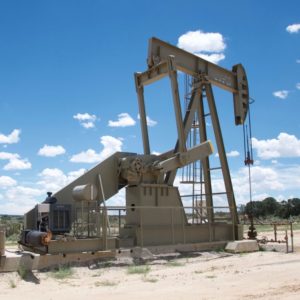New Mexico could be flush with oil money when the state’s legislative session begins in January — if production remains high in the Permian Basin and oil prices don’t take a nosedive, according to forecasts recently released at a Legislative Finance Committee (LFC) meeting.
The state general fund revenue for the next fiscal year — which begins on July 1, 2020 — is expected to top current annual spending by $907 million, a surplus of nearly 13 percent. The state is also expected to have nearly $2.3 billion in reserves at the end of the current budget year.
The numbers represent a significant economic reversal for New Mexico, the west’s poorest state. Only two years ago an economic downturn forced lawmakers to drain the state’s cash reserves, approve spending cuts and take other measures to avoid a projected budget deficit, according to the Albuquerque Journal.
Now there’s a surplus and Gov. Michelle Lujan Grisham’s administration and her fellow Democrats in the legislature are debating with GOP leaders over how it should be handled.
Democrats want higher public school budgets, tax incentives for the film industry, support for Medicaid and a range of state government services. Republicans stress the oil boom might be waning and funds should be spent on critically needed one-time expenditures.
“This money should be used to invest in the economic future of New Mexico. It should not be used to bloat the size of government or throw good money after bad on failed policies and programs,” House Minority Leader James Townsend said in a statement. “As it stands, the state’s fortunes are tied to the oil and gas industry.
“While revenues are strong now, we all know that could change,” he said. “Using this money to permanently expand the size of state government will only set up future state leaders for failure.”
Townsend said any increase in state revenues “should be applied toward tangible investments that will propel our state’s economy forward.”
However, the higher revenue estimates are “heavily dependent” on fluctuating oil prices and a continued increase in production activity. A steep decline in oil volumes could “create a fiscal challenge far more severe than a moderate recession,” the LFC’s report said.
“Revenues significantly above trend may not be sustainable over time, and the last time New Mexico saw state revenues this high above trend was just before the Great Recession,” LFC chief economist Dawn Iglesias and economist Ismael Torres wrote in their report.
“This parallel with historical patterns should be considered during discussion of appropriations in the 2020 legislative session as budgets are developed based on the new revenue estimate.”
A brief accompanying the LFC report cites a Pew study that found New Mexico was less volatile than other energy-heavy states like Alaska and North Dakota, but volatility is generally on the rise in the oil and natural gas industry.
Several attendees at the meeting voiced concerned that the projections were so tightly linked to the future of the oil and gas industry and Permian Basin production.
“The state’s long-term economic outlook is highly dependent on the oil and gas industries,” Lujan Grisham’s top budget official said during the hearing. “We really need to be cautious about building our recurring budget.
“Obviously, that is the big risk we’re facing as a state,” said Olivia Padilla-Jackson, secretary for the Department of Finance and Administration. “We are really at the mercy of all of these factors and that’s why we have to plan accordingly.”
A spokesperson for Gov. Lujan Grisham said the governor was pleased with the projections and she would take them in consideration when planning her 2020 legislative agenda.

